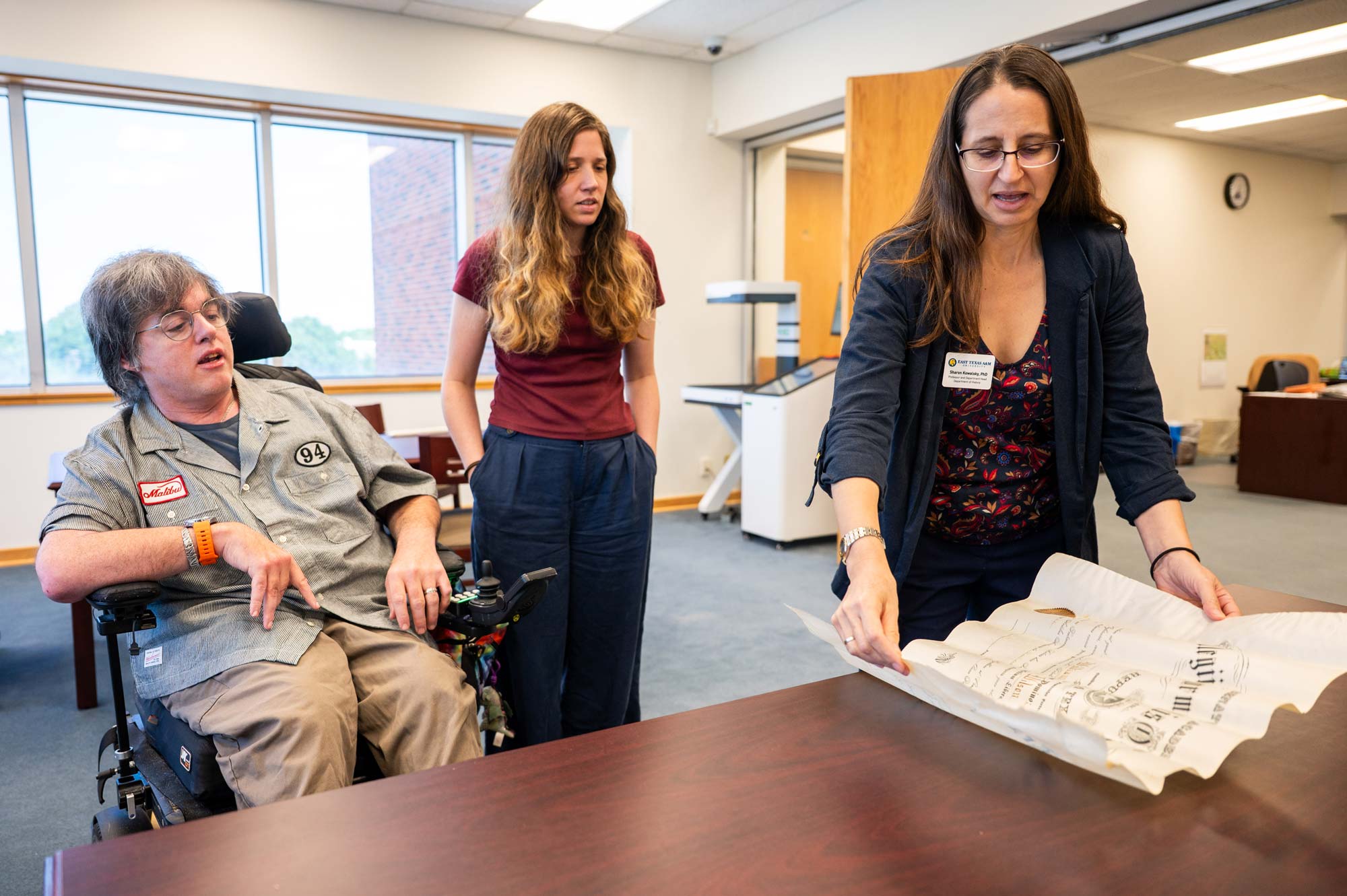
A Lambskin Legacy: What a 19th-Century Diploma Reveals About East Texas A&M’s Early Days
An alumnus recently discovered a rare diploma from 1897 and brought it back to East Texas A&M. The artifact provides a fascinating glimpse into the earliest days of our university.
After more than a century in safekeeping, a piece of East Texas A&M history has returned home. The artifact—a preserved 1897 diploma—was recently donated to the university by alumnus Ted Crim, who discovered it for sale online. The diploma belonged to William Allen Wilson, one of the early students at what was then East Texas Normal College (ETNC).
Inscribed in Latin on lambskin, the diploma doesn't just confirm a degree—it brings the university's earliest days to life. Through this rare artifact, we can glimpse the early spirit of our university and the students who helped shape it.
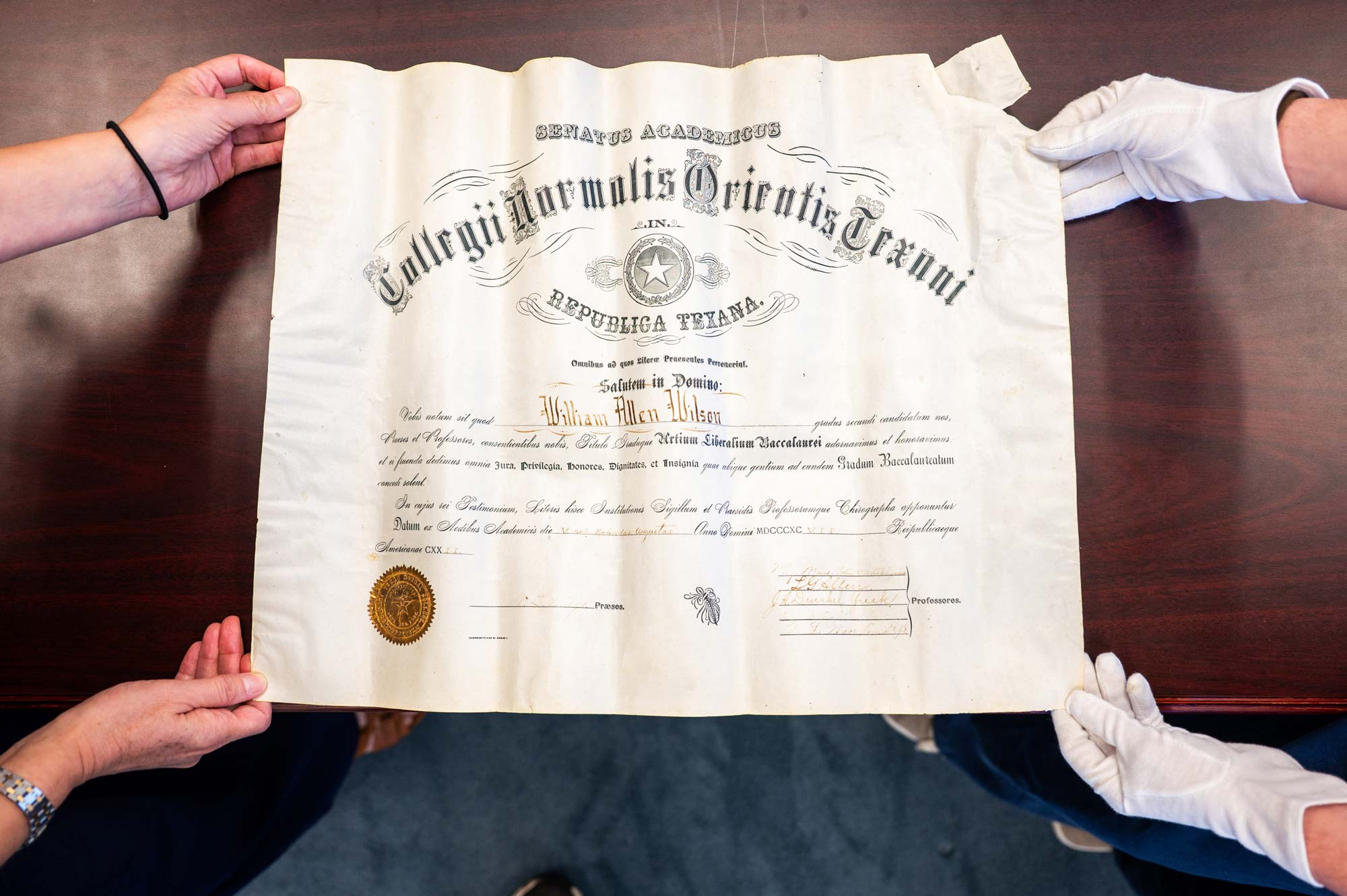
Starting College in Cooper
Spotting William Wilson's name on the 1897 diploma makes one wonder: What was college life like for this student more than 125 years ago? Thanks to records from the university's archives and the 1993 book “Professor Mayo's College,” we can get a good sense of what his college experience may have been like.
He possibly started college at the university's original location in Cooper, Texas, a small town just 17 miles northeast of Commerce. Sadly, a fire consumed the campus in 1893. After the fire, the university's president and founder, William Leonidas Mayo, explored possible rebuilding sites. He liked that the city of Commerce was well-connected to the railroad system and provided regular train service for students to Dallas, Sherman, Texarkana, Paris and beyond.
With encouragement and monetary incentives from city leaders, Mayo moved the college to Commerce in 1894. There, the college found new life.
Student Life on the New Campus
It's fascinating to think that Wilson may have been among the original 35 students who transferred from Cooper to the new location in Commerce. If so, he would have temporarily attended classes at the college's makeshift location in downtown Commerce. During those first few weeks, ETNC only had two professors: President Mayo and his wife, Etta Booth Mayo.
Within a few weeks, Mayo's brother Marion joined the staff. A few months later, Lloyd G. Allen, a professor from the old Cooper campus, returned to the faculty. Sometime after that, J. Andrew Drushel, a recent graduate from the Commerce campus, joined the ranks. To cover all subjects, each professor was required to teach multiple classes, from Greek and Latin to music and metaphysics.
Wilson undoubtedly gleaned a wealth of knowledge from these founding professors, and they all signed his diploma when he graduated in 1897.
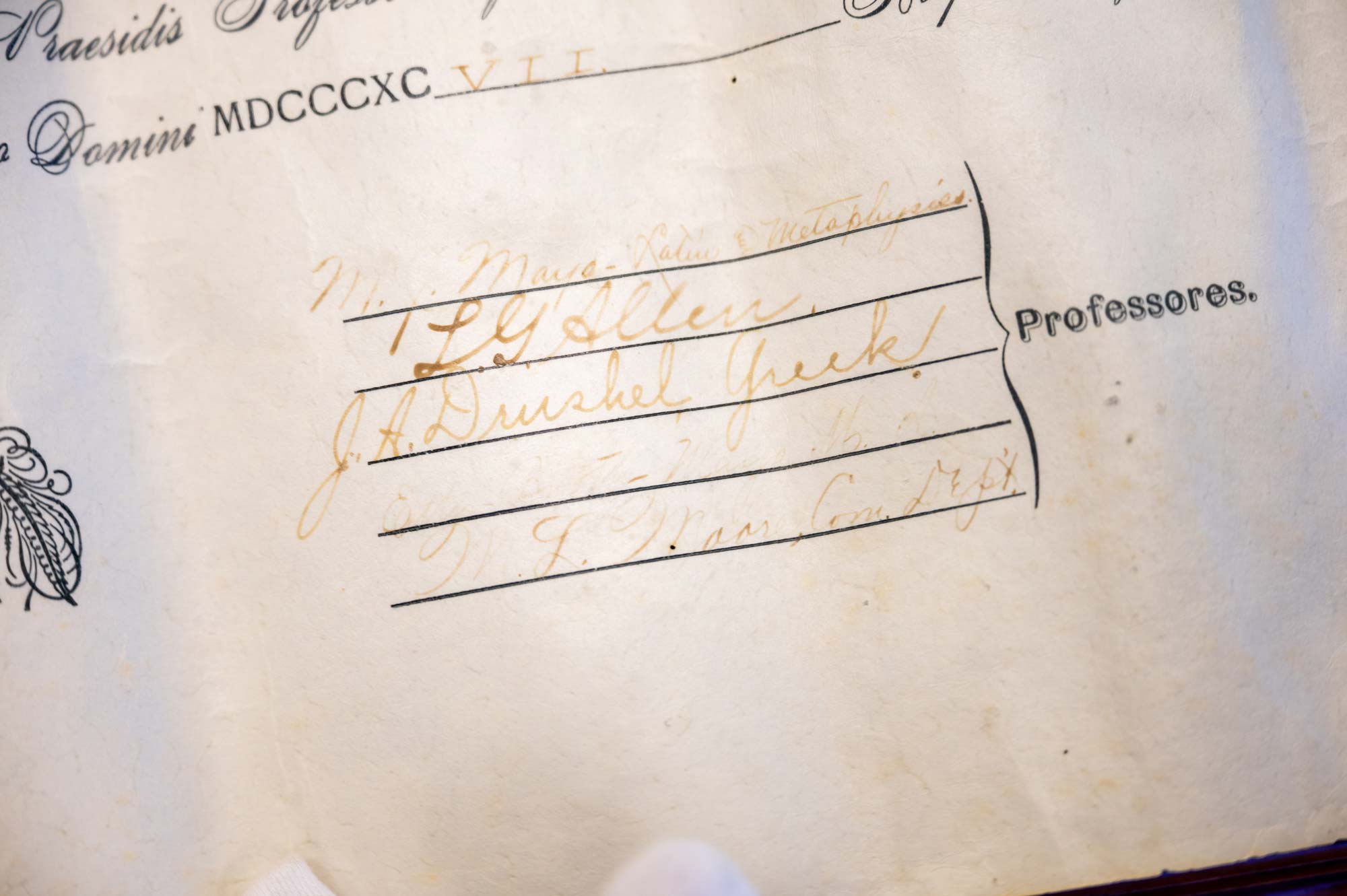
Taking Classes in the Campus’s First Building
Just four months after moving to Commerce, the college opened its first new building in January 1895. It stood near Lee Street on the current campus of East Texas A&M. The building was named College Hall, and Wilson would have attended classes there. In fact, a photo in the university's archives shows Wilson posing from a second-story window of the building!
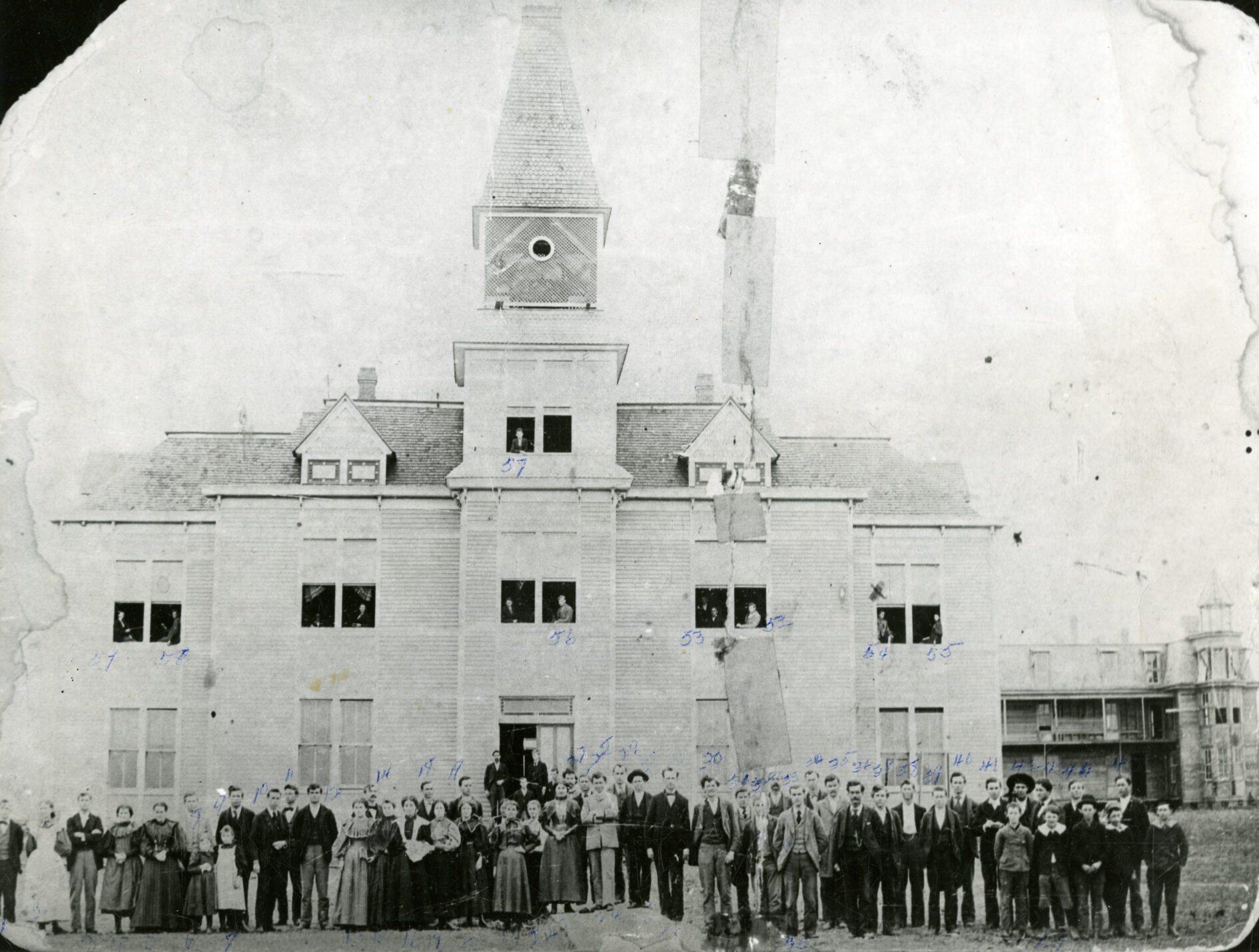
College Hall featured six classrooms, two offices, a library, laboratories, an auditorium and even a bell tower. In the photo above, a building in the background on the right appears to be a dormitory. However, records indicate that the dormitory wasn't completed until after Wilson graduated. So, he likely did not live on campus. Instead, he may have lived in a nearby home or boarding house in town.
A Different Kind of Freshman Year
If Wilson were like many of his classmates, he would have come from a rural East Texas farm. Many students arrived with only an eighth-grade education. So, to prepare for the rigors of college life, Wilson and all first-year students spent a year taking college prep courses at ETNC.
After that, students were eligible for temporary teaching certificates in elementary education. In this way, many students could earn money teaching school while they completed their college education.
Degrees of Dedication
In their second and third years, Wilson and his classmates shifted to full-fledged college classes. At that time, they chose their degree programs and more specialized courses of study. An optional fourth year was available for students who wanted a Bachelor of Arts degree and aimed for careers in law, the ministry and other specialized professions. Wilson's Bachelor of Liberal Arts degree may have meant he pursued the optional fourth year—a choice few students made.
Morning Gatherings and Mayo's Messages
Every school morning, students gathered at 8 a.m. for a morning chapel service. It wasn't a required activity, so Wilson may or may not have attended, but it was enjoyed and well attended by students. Sometimes the service was spiritual, and sometimes it was secular. Often, President Mayo would address the students, and he reportedly spoke with a contagious enthusiasm that inspired his students. At other times, guest speakers would visit, including state legislators, school superintendents, visiting academics and military generals.
Home for the Harvest
The academic year was broken into five semesters with no summer break. The continuous cycle of classes allowed students more flexibility to go home and work periodically to earn money for college. Also, many students were from small family farms in the area and needed to go home for the fall cotton harvest.
A Showdown on Campus
While campus life was mostly peaceful for Wilson and his classmates, the Wild West seemed to visit ETNC one day. In a shocking twist, the Commerce campus became the site of a dramatic confrontation.
It was the summer before Wilson graduated—August 24, 1896—so perhaps Wilson saw the buggy pull onto the campus grounds carrying Henry College president T. Henry Bridges. Henry College was located just down the road in Campbell, about eight miles from Commerce.
President Mayo and President Bridges were rivals. They held fiercely different opinions about the best way to educate college students, and their bitter debates were published in the local press. So, it was likely an ominous sight when Bridges' buggy pulled onto the Commerce campus that hot August day.
Drawing up beside Mayo, Bridges demanded that Mayo sign a statement that would retract newspaper statements he had made. When Mayo refused, Bridges drew a revolver and fired a shot. He missed, and when Mayo ran for cover, Bridges fired a second time. After missing again, Bridges leapt from his buggy and lashed Mayo with his horse whip.
By that time, several students were on the scene, and they jumped to Mayo's defense, running Bridges out of town. We can only imagine whether Wilson was one of Mayo's courageous defenders that day!
One of the First to Graduate
By the summer of 1897, when William Wilson graduated, enrollment at East Texas Normal College had grown to 212 students. Wilson was part of the very first Bachelor of Arts class to graduate from the new campus in Commerce.
A photo of the graduating class appears in the 1920 edition of “The Locust” yearbook, showing four graduates. Interestingly, Wilson himself provided the photo to the yearbook committee. A caption beneath it reads, “Mr. Wilson is now at Cooper, and was so kind as to lend us the picture from which this cut was made.”

A Diploma That Tells a Story
Wilson's diploma is written in Latin, reflecting the prestige of earning a degree at that time. A general English translation was provided by Dr. Joseph Romero, dean of the College of Humanities, Social Sciences and Arts. In English, it reads:
The Academic Senate of the Normal College of East Texas, in the State [lit. Republic] of Texas,
To all of those to whom the present document may come, [sends] greetings in the name of the Lord.
Be it known to you that we, the president and faculty, with our [the academic senate's] consent, have adorned and honored William Allen Wilson, a candidate of the second degree, with the title and degree of Bachelor of Liberal Arts,
and we have granted to him for his fair use all the rights, privileges, honors, dignities, and insignia which are everywhere usually permitted to the same bachelor’s degree.
In witness of which fact, the institutional seal and the autographs of the president and professors are affixed to this document.
Ratified [lit. given] in the Academic Hall on July 28 in the year of the Lord, 1897, in the 122nd year of the American Republic.
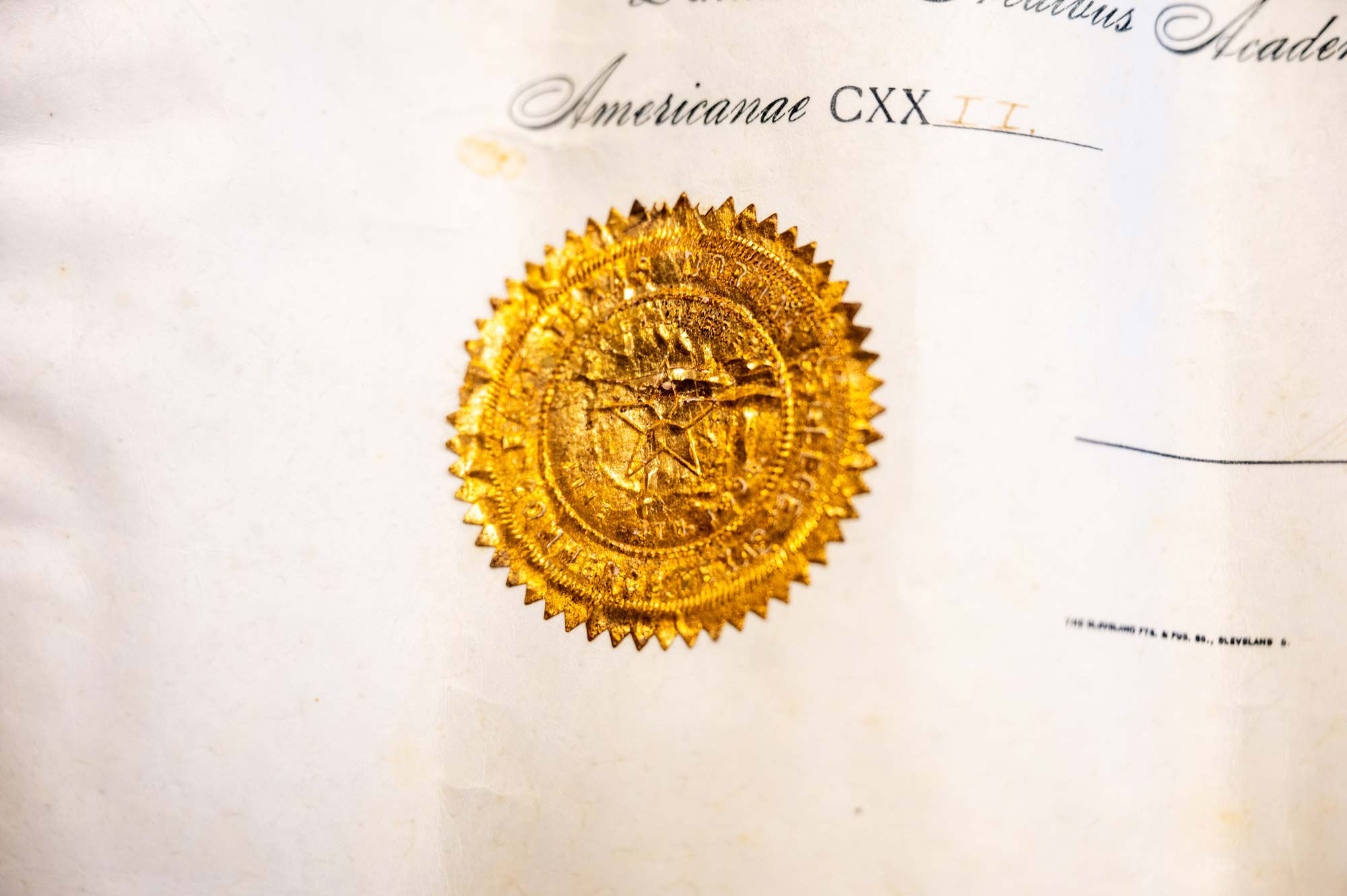
Why This Diploma Matters
University Archivist Sawyer Magnus said Wilson's diploma is the third-oldest in the university's possession. The two older diplomas are from students H.H. Moore and A.A. Creed, who both graduated from the university's Cooper location in 1893.
Tragically, many artifacts and important pieces of university history from that era were lost in a fire that destroyed almost the entire early campus in 1911, just 14 years after Wilson graduated. For this reason, every university artifact that is recovered from that time is rare and important.
Mr. Crim, the alumnus who gifted the diploma to East Texas A&M, often acquires historical artifacts for the university and donates them to the archives to help strengthen and expand its historical record.
“I feel that a strong historical legacy is integral to any institution seeking to establish institutional identity and distinction,” Crim said.
He added: “…historical items provide a glimpse into what was occurring on campus at a specific point in time and why that may be important.”
On behalf of the university, Magnus expressed appreciation to Crim for the gift and emphasized its significance:
“Though it may seem small, gifts like this diploma are very important in helping us preserve and tell the history of the university,” Magnus said.
He said the diploma's value is heightened by the signatures of Mayo, the university's founder, along with key faculty members of the time. Next to their signatures, some of those faculty members even included the subjects they taught—a detail that reflects the academic rigor students faced in earning their degrees.
Magnus also highlighted the significance of Etta Booth Mayo's signature, noting that it was likely uncommon for women's names to appear on such official documents during that era. Additionally, he said the diploma's Latin text speaks to the formality and prestige associated with earning a degree at the turn of the 20th century.
Still crisp and creamy white after over a century, the artifact will be preserved in the Special Collections and University Archives, stored away from sunlight.
Bringing History to Life
Wilson’s diploma reminds us that history isn't just a set of dates. As we read the names of our university's earliest leaders and imagine the life of a young student like Wilson, those early pioneers feel a little closer, a little more real. Through Wilson's diploma, we feel the heartbeat of a young university—and the legacy that lives on today.
Want to explore more East Texas A&M history? Visit the University Archives on the fourth floor of Waters Library to see the past come to life.
Featured Photo: University staff admire the 1897 diploma. | East Texas A&M Marketing and Communications


